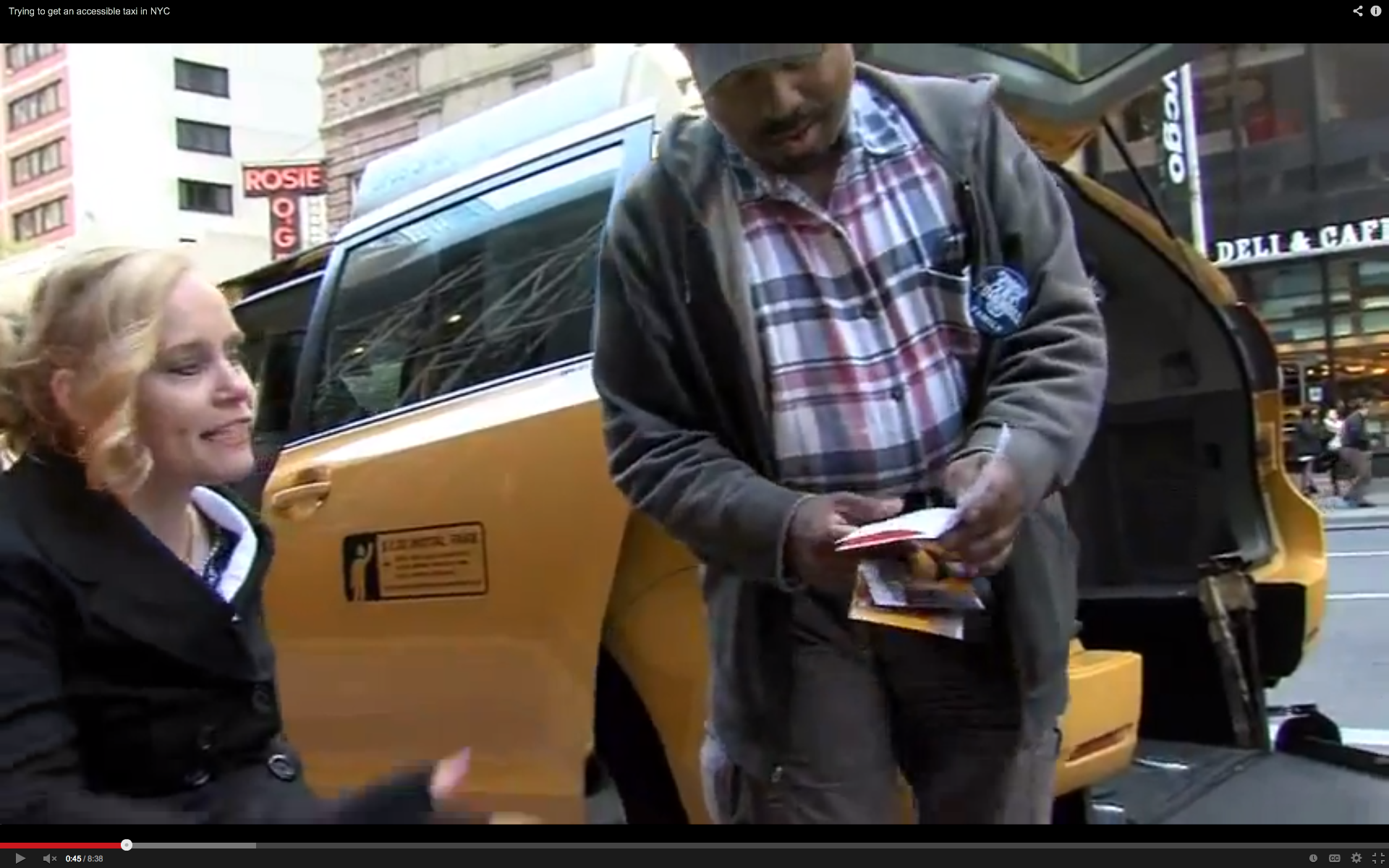If you’ve been following MV-1 on Facebook, you would have seen Dignity Taxi making national news as the only accessible taxi service in Winnipeg to follow safety protocols for its wheelchair passengers. Since when has safety become optional?
A CBC News I-Team investigation found many wheelchair taxi drivers in Winnipeg not properly securing wheelchairs and not offering safety belts to passengers. The I-Team captured hidden camera video from wheelchair van trips. The results were shocking. Only one of the taxis (Dignity Taxi) properly fastened restraints for both the passenger and their wheelchair.
When the accessible taxi drivers were asked why they didn’t offer restraints, they responded either that they weren’t required or the passenger didn’t ask. According to the law in Manitoba, taxi drivers must ensure wheelchairs are secured to the vehicle at four points. Passengers under the age of 18 must wear a shoulder strap – also called an occupant restraint, which acts as a seatbelt. For adult passengers in wheelchairs, the driver must offer the use of a shoulder strap and help the passenger attach the belt if help is requested. This story makes us wonder how the accessible taxis in your own community would fare?
http://www.youtube.com/watch?v=S5VnhoiYWg8#action=share
To be fair, not all accessible vehicles were created equal. Have a look at this video that demonstrates some of the challenges accessible taxi drivers with conversion vans face in trying to follow safety protocols. The video is filmed in New York City – a city not known for driver caution! However, this kind driver of a rear entry accessible cab depicts the difficulties he and his wheelchair customers can experience.
First off, his passenger cannot get over the curb and must be escorted to the intersection at the end of the block to get off the sidewalk. Once maneuvering his way back on the street through dangerous traffic to the cab’s accessible rear door, the driver cinches the passenger’s power chair into the back end of the vehicle next to the spare tire. The driver then has to crawl around the chair to buckle it down. The process takes almost 10 minutes (never mind that the meter is still running). The passenger feels like luggage and the driver is frustrated and inconvenienced.
Despite these issues, NYC has chosen a rear entry vehicle as its accessible “taxi of tomorrow.” Two steps forward, one step back. While we applaud the idea of a major city supporting accessible transportation, they shouldn’t have to sacrifice safety and comfort to do so. Safety should never be optional!














